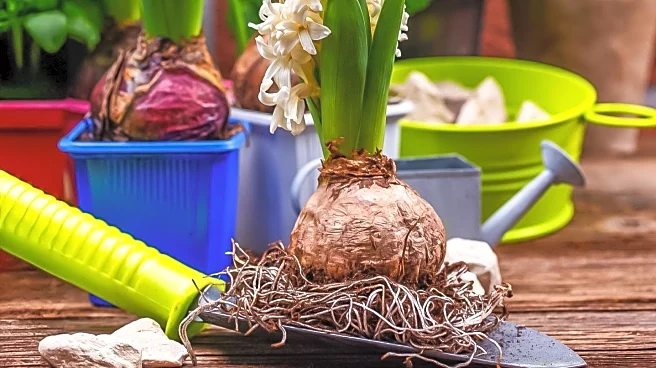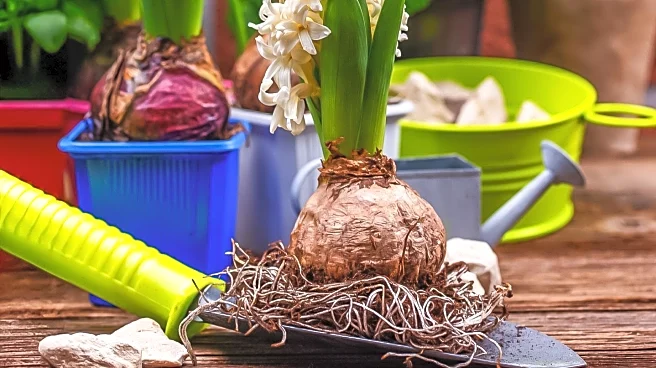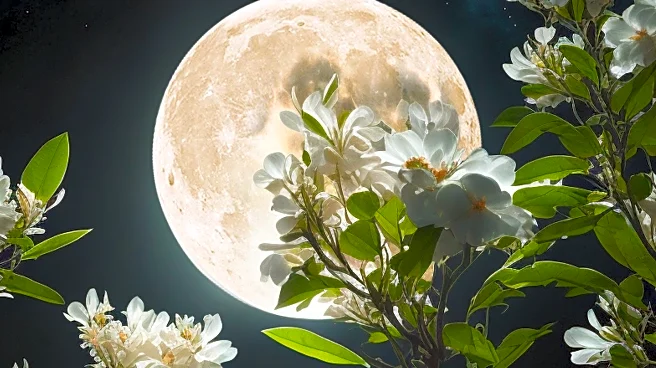What is the story about?
What's Happening?
Gardening expert Luke Newnes has recommended planting flower bulbs at night during October, utilizing the moonlight for optimal growth conditions. This advice comes as part of a broader strategy to prepare gardens for the upcoming winter months. Newnes, a member of the Interior Squad at Hillarys, emphasizes the benefits of planting during cooler evenings, which reduce evaporation and maintain soil warmth, encouraging root growth. The Harvest Moon in October is highlighted as an ideal time for this activity, marking a period before frost sets in. Gardeners are encouraged to take advantage of the longer nights to plant bulbs such as daffodils, crocuses, and hyacinths, ensuring a vibrant spring bloom.
Why It's Important?
The recommendation to plant bulbs at night is significant for gardeners looking to maximize their efforts in preparing for spring. By planting during cooler evenings, gardeners can ensure better moisture retention and soil conditions, which are crucial for bulb development. This method not only enhances the chances of successful growth but also aligns with sustainable gardening practices by reducing water usage. As climate patterns shift, such strategies become increasingly important for maintaining healthy gardens. Additionally, this approach offers a unique opportunity for gardeners to engage with their environment in a reflective and intentional manner, fostering a deeper connection with nature.
What's Next?
Gardeners who adopt this nighttime planting strategy can expect to see improved growth and bloom in the spring. As the nights grow longer, those who maintain regular garden upkeep can continue to utilize evening hours for other gardening tasks, such as harvesting late crops and preparing soil for winter. This method may also inspire new gardening rituals and community events centered around moonlight planting. As awareness of this technique spreads, it could lead to broader adoption and potentially influence gardening practices on a larger scale.
Beyond the Headlines
The practice of moonlight planting touches on cultural and historical aspects of gardening, where lunar cycles have traditionally guided agricultural activities. This approach not only offers practical benefits but also invites gardeners to participate in a timeless ritual, connecting them to ancient practices. As gardening continues to evolve, integrating such methods could lead to a resurgence in traditional techniques, blending modern science with historical wisdom.
AI Generated Content
Do you find this article useful?














